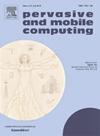最小化无人机辅助协同计算卸载的通信计算能耗
IF 3.5
3区 计算机科学
Q2 COMPUTER SCIENCE, INFORMATION SYSTEMS
引用次数: 0
摘要
无人驾驶飞行器(uav)被视为处理用户卸载任务作为边缘节点的潜在技术。凭借其适应性,无人机可以快速部署到有用的位置并为消费者服务。然而,无人机无法长时间连续运行是当前无人机辅助移动边缘计算解决方案面临的挑战。提出了无人机计算窗口的动态划分、用户分组和用户传输功率的优化、无人机部署位置的优化等优化问题。设计了一种基于动态计算窗口分配的通信-计算资源调度算法(CCRS-DW),实现了问题的分解和优化。具体来说,使用k均值聚类技术和二分搜索来解决这个问题。仿真结果表明,所提出的CCRS-DW方案能耗显著低于其他基准方案。本文章由计算机程序翻译,如有差异,请以英文原文为准。
Minimizing communication-computing energy consumption for UAV assisted collaborative computing offloading
Unmanned aerial vehicles (UAVs) are viewed as a potential technology for handling user offloading duties as edge nodes. With their adaptable qualities, UAVs may be quickly deployed to useful locations and service consumers. However, the inability of UAVs to operate continuously for an extended time is a challenge for the current UAV-assisted mobile edge computing solutions. We put forth an optimization problem that involves the dynamic division of computational windows for UAVs, the optimization of user grouping and user transmission power, and the optimization of UAV deployment locations to save energy. We design a Communication-Computing Resource Scheduling with Dynamic computational Window allocation (CCRS-DW) algorithm to realize the problem decomposition and optimization. Specifically, the -means clustering technique and the bisection search are used to tackle this problem. Simulation results show that the energy consumption of the proposed CCRS-DW scheme is significantly lower than that of other benchmark schemes.
求助全文
通过发布文献求助,成功后即可免费获取论文全文。
去求助
来源期刊

Pervasive and Mobile Computing
COMPUTER SCIENCE, INFORMATION SYSTEMS-TELECOMMUNICATIONS
CiteScore
7.70
自引率
2.30%
发文量
80
审稿时长
68 days
期刊介绍:
As envisioned by Mark Weiser as early as 1991, pervasive computing systems and services have truly become integral parts of our daily lives. Tremendous developments in a multitude of technologies ranging from personalized and embedded smart devices (e.g., smartphones, sensors, wearables, IoTs, etc.) to ubiquitous connectivity, via a variety of wireless mobile communications and cognitive networking infrastructures, to advanced computing techniques (including edge, fog and cloud) and user-friendly middleware services and platforms have significantly contributed to the unprecedented advances in pervasive and mobile computing. Cutting-edge applications and paradigms have evolved, such as cyber-physical systems and smart environments (e.g., smart city, smart energy, smart transportation, smart healthcare, etc.) that also involve human in the loop through social interactions and participatory and/or mobile crowd sensing, for example. The goal of pervasive computing systems is to improve human experience and quality of life, without explicit awareness of the underlying communications and computing technologies.
The Pervasive and Mobile Computing Journal (PMC) is a high-impact, peer-reviewed technical journal that publishes high-quality scientific articles spanning theory and practice, and covering all aspects of pervasive and mobile computing and systems.
 求助内容:
求助内容: 应助结果提醒方式:
应助结果提醒方式:


